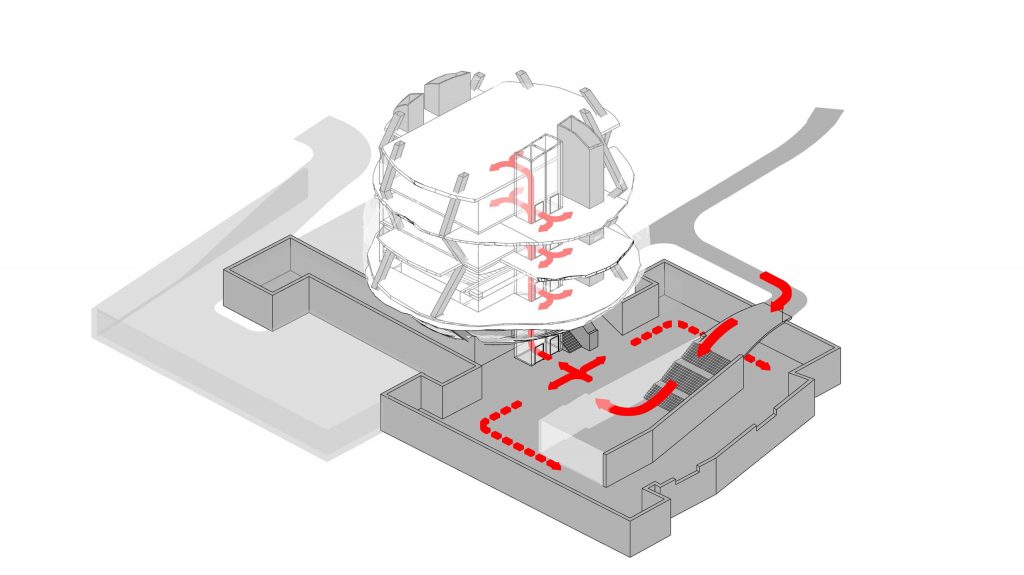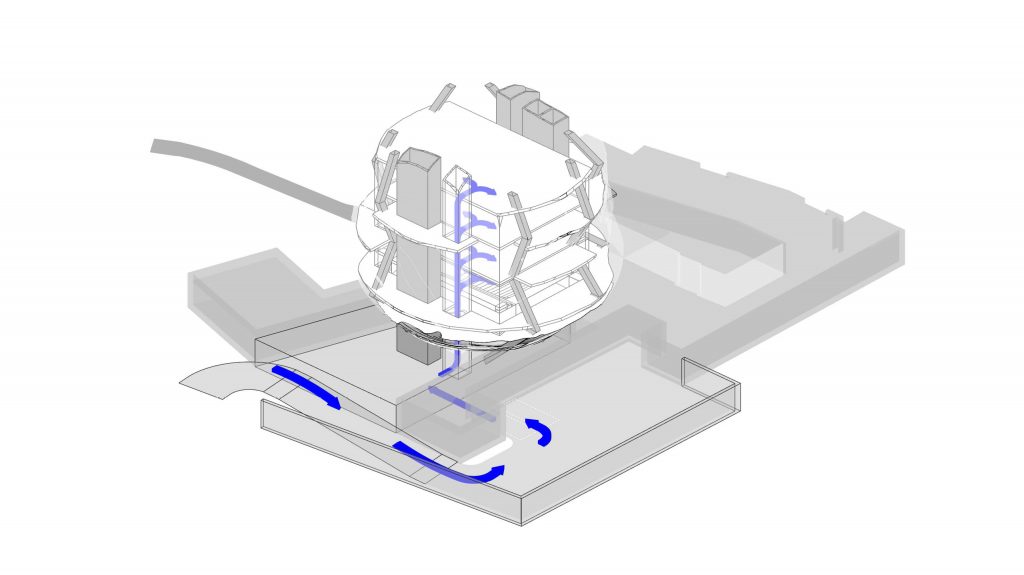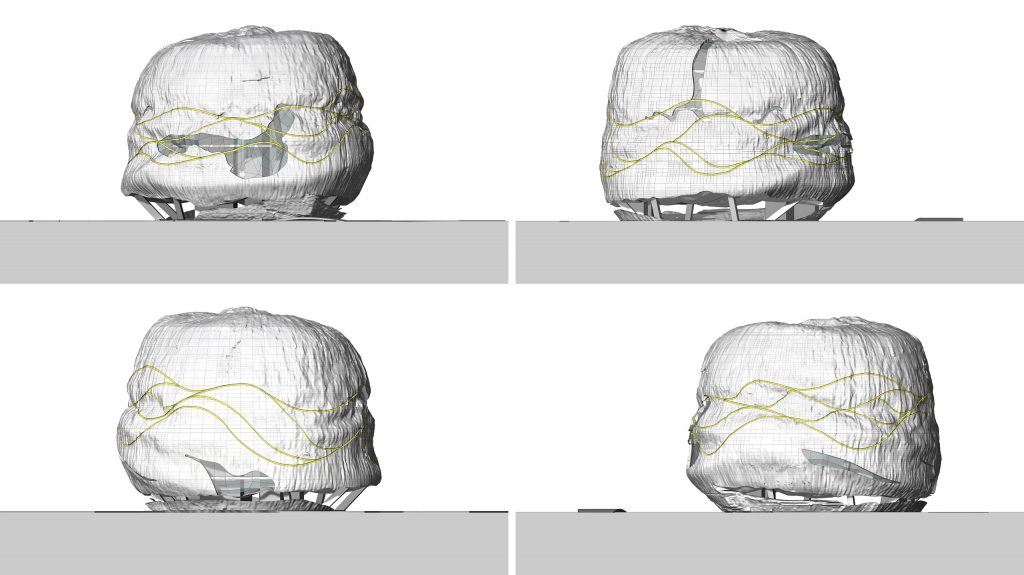Location
Budapest, Hungary
Program
Music Hall
Dates
2014
Key Staff
Eric McNevin
Architecture, and all art, has a long tradition of “aspiring toward the condition of music” as Walter Pater famously observed in 1877. A number of artistic and scientific developments since the mid-20th century have focused on the depiction of music via advanced graphic notation. Musicologists such as Charles Seeger (at the University of California in the 1950’s) have developed innovations such as the Melograph to depict the auditory effects of listening to music through visual graphics. These ‘Listening Scores’ record the auditory progression of the music composition rather than providing instructions for playing the music. Meanwhile, there have also been great advances in musical notation such as the work of John Cage and Iannis Xenakis.
In the house of Hungarian Music well known Hungarian scores by the likes of Bartok, Erkel, and Kodaly are translated graphically and used to shape the interior and exterior form of the building along with a number of modern notation conventions. This methodology frames the history of Hungarian Music through a modern graphic representation of the experience of listening to classical scores. In doing so, it also intertwines the expressed curatorial objectives of providing information on the history of music, the physics of sound and the physiological nature of hearing.
The new facility is bounded within the footprint of the existing building on the site. This provides a strong link from the site’s history to its future and the new museum. Positioning the new facility within the existing footprint also minimizes impact on the site, and greatly reduces the need for tree removal. A large, covered, open-air Amphitheater on the ground level is accessible to the public for a number of outdoor performance activities. Reception, Education, and Services are located below grade as visitors descend to the entry located in current building courtyard.
Visitors move vertically through a series of permanent and temporary exhibition and performance spaces above. The exhibition halls have strategically located openings that frame views to other landmarks throughout the park.





